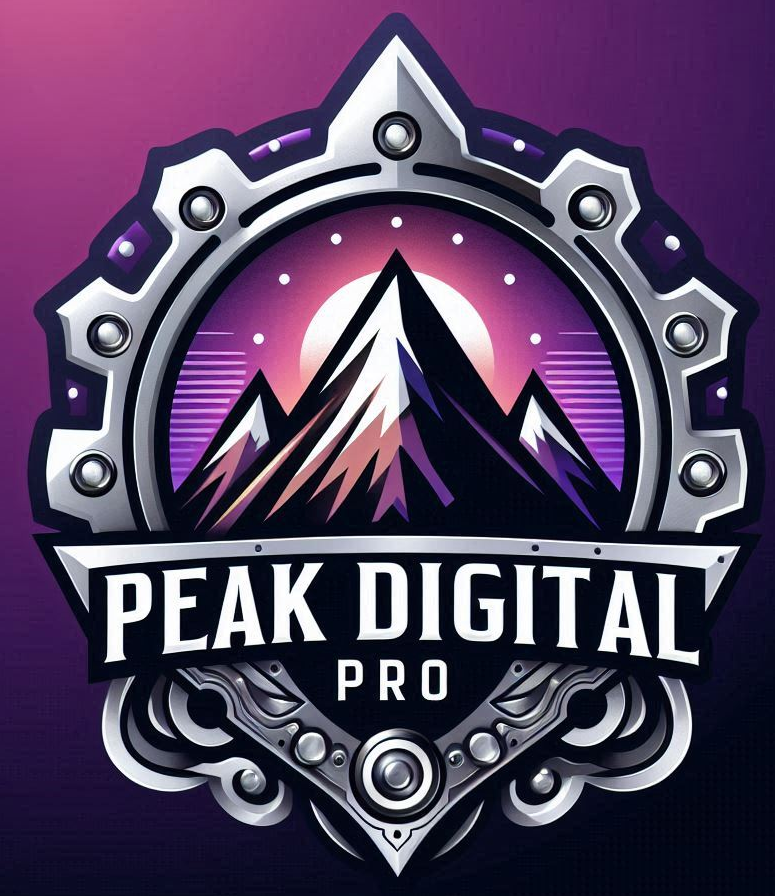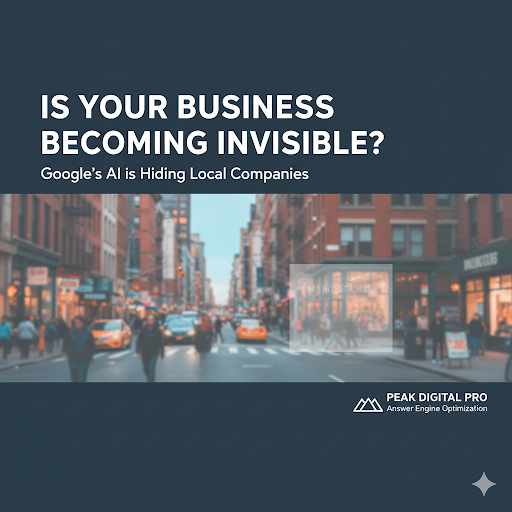SEO vs SEM: Smart Digital Marketing for US Businesses 2025
Businesses are pouring resources into search visibility, trying to make every marketing dollar count in 2025. You might think going all in on paid ads is the fastest way to show up online. Yet, statistics reveal a surprising reality: over 68 percent of all trackable website traffic comes from organic and paid search combined, but organic SEO alone delivers the majority of long-term conversions . That means the best results are unlocked when you blend SEO and SEM instead of picking just one.
Table of Contents
Quick Summary
| Takeaway | Explanation |
|---|---|
| SEO focuses on organic growth | SEO enhances website rankings and builds authority over time through quality content and optimization. |
| SEM provides immediate visibility | SEM offers instant ad placements, quickly driving traffic but requiring consistent budget investments. |
| Choose based on goals and budget | Prioritize SEM for short-term gains and SEO for long-term growth, depending on business needs and financial limits. |
| Combination maximizes effectiveness | Integrating both SEO and SEM strategies can enhance overall online visibility and improve marketing outcomes. |
| Local strategies boost regional presence | Businesses should tailor SEO efforts with local keywords and content to engage specific geographic markets effectively. |
What Are SEO and SEM? Key Differences
Digital marketing strategies have transformed how businesses connect with potential customers online. SEO and SEM represent two powerful approaches that help companies increase their digital visibility and attract targeted traffic.
Below is a comparison table summarizing the key differences between SEO and SEM as discussed in the section.
| Aspect | SEO (Search Engine Optimization) | SEM (Search Engine Marketing) |
|---|---|---|
| Focus | Organic search growth | Paid + organic search, mainly via paid ads |
| Investment | Upfront & ongoing (content, optimization) | Ongoing (ad spend, per click/impression) |
| Time to Results | Long-term, gradual improvement | Immediate visibility |
| Sustainability | Sustained growth after initial investment | Stops when ads are paused |
| Key Components | Keyword research, content, technical optimization | Paid ads, PPC, keyword bidding |
| Best For | Sustainable brand building | Short-term campaigns, instant traffic |
Understanding Search Engine Optimization (SEO)
Search Engine Optimization is a strategic process focused on improving a website’s organic search rankings without direct payment. According to Maryville University , SEO involves optimizing website content, structure, and technical elements to rank higher in search engine results pages (SERPs).
SEO strategies include:
- Keyword Research : Identifying terms potential customers use when searching
- Content Creation : Developing high-quality, relevant website content
- Technical Optimization : Improving website speed, mobile responsiveness, and site architecture
Unlike paid advertising, SEO requires consistent effort and time to generate sustainable results. Businesses invest in creating authoritative content that naturally attracts search engine algorithms and user engagement.
Search Engine Marketing (SEM) Explained
TechTarget defines SEM as a broader digital marketing strategy that includes both organic search optimization and paid advertising techniques. SEM encompasses SEO practices while also incorporating paid search advertising like Google Ads.
Key SEM components include:
- Paid Search Advertising : Purchasing targeted ad placements in search results
- Pay Per Click (PPC) Campaigns : Creating ads where businesses pay only when users click
- Keyword Bidding : Strategically selecting and purchasing relevant search terms
SEM provides immediate visibility through paid channels, allowing businesses to quickly reach potential customers compared to the gradual approach of SEO.
Strategic Differences and Integration
Wikipedia’s Search Engine Marketing entry highlights that while SEO and SEM have distinct approaches, they are most effective when used complementarily. SEO focuses on organic, long-term growth, whereas SEM offers quick, targeted visibility through paid strategies.
Successful digital marketing requires understanding these nuanced differences. SEO builds sustainable online authority through quality content and technical optimization. SEM provides immediate market entry and precise audience targeting through paid advertising channels.
Businesses should view SEO and SEM not as competing strategies, but as interconnected tools designed to maximize online visibility and drive meaningful customer engagement.

When to Use SEO or SEM for Your Business
Choosing between SEO and SEM requires strategic thinking and a deep understanding of your business goals, budget, and target audience. Each approach offers unique advantages that can significantly impact your digital marketing effectiveness.
The following table summarizes when to use SEO, SEM, or a combination based on business needs described in the content.
| Business Goal/Factor | Recommended Approach | Reason |
|---|---|---|
| Immediate results/promotion | SEM | Provides instant visibility via paid search and targeted campaigns |
| Long-term sustainable growth | SEO | Builds organic authority and ongoing traffic over time |
| Limited initial budget | SEO | More cost-effective, doesn’t require continuous ad spending |
| Large budget, desire to scale fast | SEM or Hybrid (SEO + SEM) | Can quickly penetrate market and test strategies while building SEO foundation |
| Highly competitive industry | Hybrid (SEO + SEM) | SEM for visibility, SEO for long-term credibility |
| Service-based/traditional business | SEO | Supports long-term brand-building, trust |
| Technology/e-commerce/startups | SEM or Hybrid | Rapid testing, agile response to market demands |
Short-Term vs Long-Term Marketing Goals
TechTarget highlights that organizations face critical decisions when selecting digital marketing strategies. Businesses seeking immediate visibility and quick results should prioritize SEM. Paid search advertising enables companies to appear prominently in search results almost instantly, making it ideal for time-sensitive promotions, product launches, or competitive markets.
Conversely, SEO represents a long-term investment in digital presence. Companies committed to sustainable growth and building organic credibility will find SEO more beneficial. This approach develops a robust online foundation through quality content, technical optimization, and consistent strategy.
Budget Considerations and ROI
Budget plays a pivotal role in determining whether SEO, SEM, or a combination works best for your business. Small businesses with limited marketing funds might initially focus on cost-effective SEO strategies. Wikipedia’s SEO research suggests that while SEO requires time and expertise, it can provide more sustainable returns compared to continuous paid advertising.
Companies with larger marketing budgets can leverage SEM for immediate market penetration. Paid search campaigns offer precise targeting options, allowing businesses to reach specific demographics, geographic regions, and user interests. This granular control enables more efficient spending and potentially higher conversion rates.
Industry and Competitive Landscape
Your industry’s digital competitiveness significantly influences the SEO vs SEM decision. Highly saturated markets with intense online competition might require a hybrid approach. Businesses can use SEM to gain initial visibility while simultaneously developing a robust SEO strategy.
Technology startups, e-commerce platforms, and businesses in rapidly evolving sectors often benefit from SEM’s agility. These organizations can quickly test market responses, gather data, and refine their digital marketing approach. Traditional service-based businesses might find SEO more aligned with their long-term brand-building objectives.
Successful digital marketing isn’t about choosing between SEO and SEM but understanding how to integrate these strategies effectively. By analyzing your specific business needs, target audience, and resource availability, you can develop a nuanced approach that maximizes online visibility and drives meaningful growth.
SEO vs SEM Costs and ROI Explained
Understanding the financial dynamics of SEO and SEM is crucial for businesses seeking to maximize their digital marketing investments. Each strategy presents unique cost structures and potential returns that require careful analysis and strategic planning.
Initial Investment and Cost Structures
The American Marketing Association reveals that SEO and SEM have fundamentally different cost models. SEO typically requires a substantial upfront investment in content creation, website optimization, and technical improvements. Businesses might spend significant resources developing high-quality content, improving site architecture, and implementing technical SEO strategies.
In contrast, TechTarget explains that SEM offers more immediate but ongoing cost commitments. Paid search advertising demands continuous financial input, with costs directly tied to click-through rates and competitive keyword bidding. Companies pay for each click or impression, making budget management more dynamic and potentially more expensive in competitive markets.
Return on Investment (ROI) Analysis
CausalFunnel highlights the distinctive ROI characteristics of SEO and SEM. SEO provides a slower but potentially more sustainable return. Once initial investments are made, businesses can generate organic traffic without continual direct payments. This approach builds long-term digital assets that continue generating value over time.
SEM offers more immediate but potentially less stable returns. Businesses can quickly generate traffic and leads through paid advertising, allowing for rapid market testing and precise audience targeting. However, the moment advertising spending stops, traffic typically declines immediately. This makes SEM an excellent strategy for time-sensitive campaigns or businesses needing immediate visibility.
Strategic Cost-Effectiveness Considerations
Effective digital marketing requires understanding the nuanced cost-effectiveness of SEO and SEM. Small businesses with limited budgets might initially focus on cost-efficient SEO strategies, gradually building organic visibility. Larger organizations can leverage a hybrid approach, using SEM for immediate results while simultaneously developing robust SEO foundations.
Key cost-effectiveness factors include industry competitiveness, target audience behavior, and specific business goals. Technology startups might benefit from SEM’s quick market entry, while service-based businesses could find greater long-term value in SEO investments.
Ultimately, the most successful digital marketing strategies integrate both SEO and SEM, balancing immediate visibility with sustainable organic growth. By carefully analyzing costs, potential returns, and strategic objectives, businesses can develop a comprehensive approach that maximizes their digital marketing investment.
Best Strategies for Colorado and US Business Owners
Colorado businesses operate in a dynamic digital marketplace that demands sophisticated and adaptable marketing approaches. Understanding how to effectively implement SEO and SEM strategies can provide significant competitive advantages across various industries.
Local Search Optimization for Colorado Markets
SEMrush State of Search Report emphasizes the critical importance of localized digital marketing strategies. For Colorado businesses, this means developing hyper-targeted content that speaks directly to regional audiences and incorporates location-specific keywords.
Successful local SEO strategies include:
- Geo-Targeted Content : Creating website content that references Colorado cities, landmarks, and regional characteristics
- Google My Business Optimization : Ensuring complete and accurate local business listings
- Local Link Building : Developing relationships with Colorado-based websites and organizations
Businesses in cities like Denver, Colorado Springs, and Boulder can leverage these techniques to improve their local search visibility and attract region-specific customer traffic.
Industry-Specific Digital Marketing Approaches
Different Colorado industries require nuanced digital marketing strategies. Technology startups in the Denver metro area might prioritize aggressive SEM campaigns to quickly establish market presence. Conversely, traditional service-based businesses in mountain communities could focus on organic SEO to build long-term credibility.
Key considerations for industry-specific strategies:
- Technology Sector : Emphasize quick-response SEM with highly targeted keyword campaigns
- Tourism and Hospitality : Blend SEO and SEM to capture seasonal search traffic
- Professional Services : Develop comprehensive content marketing strategies supporting organic search growth
Budget-Conscious Digital Marketing for Small Businesses
Small and medium-sized businesses across Colorado can maximize their digital marketing impact by adopting strategic, cost-effective approaches. The goal is to balance immediate visibility with sustainable long-term growth.
Recommended strategies for budget-conscious businesses include:
- Incremental SEM Investment : Start with modest paid search budgets and gradually expand
- Content-Driven SEO : Produce high-quality, locally relevant content that attracts organic traffic
- Precise Audience Targeting : Use detailed demographic and geographic targeting in SEM campaigns
By understanding the unique digital landscape of Colorado and broader US markets, businesses can develop integrated marketing strategies that effectively combine SEO and SEM. Success requires continuous learning, adaptation, and a willingness to experiment with different approaches tailored to specific business goals and target audiences.

The most successful digital marketing strategies recognize that SEO and SEM are complementary tools, not competing tactics. Businesses that approach these strategies holistically will be best positioned to achieve sustainable growth and competitive advantage in an increasingly digital marketplace.
Frequently Asked Questions
What is the difference between SEO and SEM?
SEO (Search Engine Optimization) focuses on organic search growth through content and technical improvements, while SEM (Search Engine Marketing) combines paid advertising with organic search efforts for immediate visibility.
When should I use SEO instead of SEM for my business?
You should prioritize SEO for long-term sustainable growth and building organic authority. It’s effective for businesses seeking to develop a robust online presence without relying on continuous ad spending.
What are the costs associated with SEO and SEM?
SEO typically requires an upfront investment in content and site optimization, while SEM involves ongoing costs related to paid ads, such as pay-per-click (PPC) fees. Each strategy has different financial dynamics based on your goals.
How can I integrate SEO and SEM into my digital marketing strategy?
Integrate SEO and SEM by using SEM for immediate visibility and testing your market while simultaneously developing a strong SEO foundation for long-term growth. This hybrid approach leverages the strengths of both strategies.
Ready to Bridge the SEO and SEM Gap for Real Business Growth?
If you are tired of marketing strategies that never quite deliver the boost you want, Peak Digital Pro offers custom solutions that put your business ahead of the competition. This article clearly shows how blending SEO and SEM unlocks the most value for your digital presence. Issues like slow organic traffic, unpredictable ad spend, and local search competition can hold you back. Our team knows how challenging it is to find steady growth and instant visibility at the same time. We offer the expert support you need to break through these barriers by combining deep SEO insights with advanced SEM tactics tailored for your specific goals.

Take advantage of our AI-driven marketing technology to reach new customers, increase conversions, and become a market leader in Colorado or anywhere in the US. Visit Peak Digital Pro to see how our web development and expert SEO optimization services work together for real results. Get started today and watch your online presence transform before your eyes. Your next big win starts with a conversation — connect with us now.







